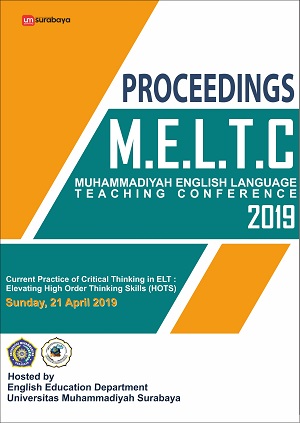The English Inflectional Suffixes And Derivational Affixes In Elt
Abstract
The purpose of this paper is to explore the meaning of inflectional suffixes and derivational affixes. When we talk about inflection and derivation, it’s also talks about suffixes and prefixes. This topic is important to be discussed because we often find the learners of English make a mistake when they make sentences buy using verbs form or plural forms. Besides they also often make mistakes when they want to form a new word from nouns to adjectives, adjectives to nouns, adjectives to verbs, adjectives to adverbs, etc. Adding a suffix in to a word is not easy because one has to know the rules. The rule of adding the suffix or affix has the grammar of a language. The result of the study is the number of inflectional as not so many that of derivational affixes. Yet any particular inflectional suffixes will be used much more frequently than any particular derivational affixes. Inflectional morpheme ‘plural’ occurs far more often than does the derivational morpheme -ness. It can be concluded that in English all the inflectional affixes are suffixes, but the set of the derivational affixes includes both prefixes and suffixes.
Â
Key words:Â The English Inflectional Suffixes, Derivational Affixes, ELT
References
Hurford, James R. And Heasly, Brendan 1983. Semantic: a Coursebook. London: Cambridge University Press.
Rachmadie, Sabrony. 1989. Derivational and Inflectional Affixes – Vocabulary. Suranaya:IKIP Surabaya Press.
Richards, Jack C., Platt. John, Platt Heidi. 1992. Longman Dictionery of Language teaching and Applied Linguistics. England: Longman.
Robin, R.H. 1980. General Linguistics – An Introductory Survey: London: Longman.
Soekemi, 1985. Linguistics : A Work Book. Surabaya IKIP Surabaya Press.
Trask, R.L. 1996. A Dictionary of Grammatical Terms in Linguistics. London:T.J. Press (Patstow)Ltd.






